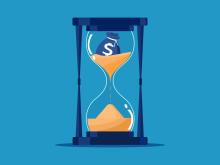Recession and Mixed Messages
Markets have rallied based on a perspective that the Federal Reserve will begin to ease rates sometime in 2024. Sounds great, right?
The question we have to struggle with is will the Fed cut rates because the economy will be so bad? Or will they cut rates to maintain a slower growth economic trajectory?
It’s walking a fine line. We want the economy to slow which will cause rates to drop, but we don’t want it to slow too much because then economic activity will be impacted which will affect other markets besides the fixed income sector.
It’s really too early to tell. Frankly, the Federal Reserve doesn’t even know. But as you know, our thesis has been that inflation will slow this year and the Fed will cut next year. So far the inflation projections seems to be playing out with the core rate dropping significantly; we’ll see about next year's slowdown intensity.
If the economy does slow, we do not expect a deep recession. Underlying economic data suggests that the employment market is strong, (one of the key data points). We are watching other statistics to confirm our perspective on economic activity in 2024.
***
Begin Quote
“Markets are confused over the odds of a U.S. recession, and “somebody has got it wrong,” according to hedge fund manager David Neuhauser.
The CIO of Livermore Partners told CNBC on Monday that many investors are hoping for a “Goldilocks” scenario, in which the economy doesn’t grow too quickly, or shrink too much.
“The outlook was, of course, that the Fed’s going to look to be cutting rates because they see a soft landing approaching. And it looks like, on the surface, it is,” he told “Squawk Box Europe.”
Recent jobs data and inflation figures have boosted hopes that a recession can be avoided in the U.S. Nonfarm payrolls outpaced expectations in November, and inflation figures for October also beat estimates, with consumer prices coming in flat on the previous month and up 3.2% from a year prior.
“But at the same time, underneath the surface, you’re seeing a lot of cracks,” Neuhauser added.
He identified weakness in the U.S. consumer and the global economy — China in particular — and in the fact that inflation numbers remain stubbornly high in a number of countries.
“It looks like the U.S. is the best spot to be in, and I think that today that’s true. Except I think that [the] forward path — are we going to see things start to fall off a cliff? Or are we going to, sort of, glide path down and corporate earnings are going to be sheltered from the storm?” he said.
“That’s the thing, I think, people don’t have a really good understanding of today, but they’re believing that that’s going to happen — that’s the narrative.”
Oil and gas markets, which Livermore Partners is invested in, are “telling a whole different story” when it comes to the economic outlook, according to Neuhauser.
“When you look at the oil … and you look at the gold market, that’s telling you recession is in the front,” he said. “But when you read the tea leaves in terms of what analysts are saying, economists are saying as far as the U.S. economy — that the soft landing is approaching. That’s what, actually, the 10-year [Treasury yield] is telling you.”
Brent crude futures with February expiry were trading around $75.67 per barrel early Monday, down over 20% from their peak of around $97 per barrel in September.
Spot gold prices have soared from their early October lows of around $1,810 per ounce. The commodity was trading around $1,991 an ounce Monday, off a record high above $2,100 per ounce seen last week.
Both falling oil prices and rising gold prices indicate growing recessionary fears. At the same time, heightened expectations of a soft landing (following the strong jobs data) saw 10-year Treasury yields jump Friday. The 10-year yield was hovering around 4.254% early Monday.
“Somebody has it wrong here, is what I’m trying to tell you,” Neuhauser added. “It’s hard to describe who has it [wrong] yet. So I’m just really waiting and seeing to decipher what’s the right path to take.”
End Quote
***


